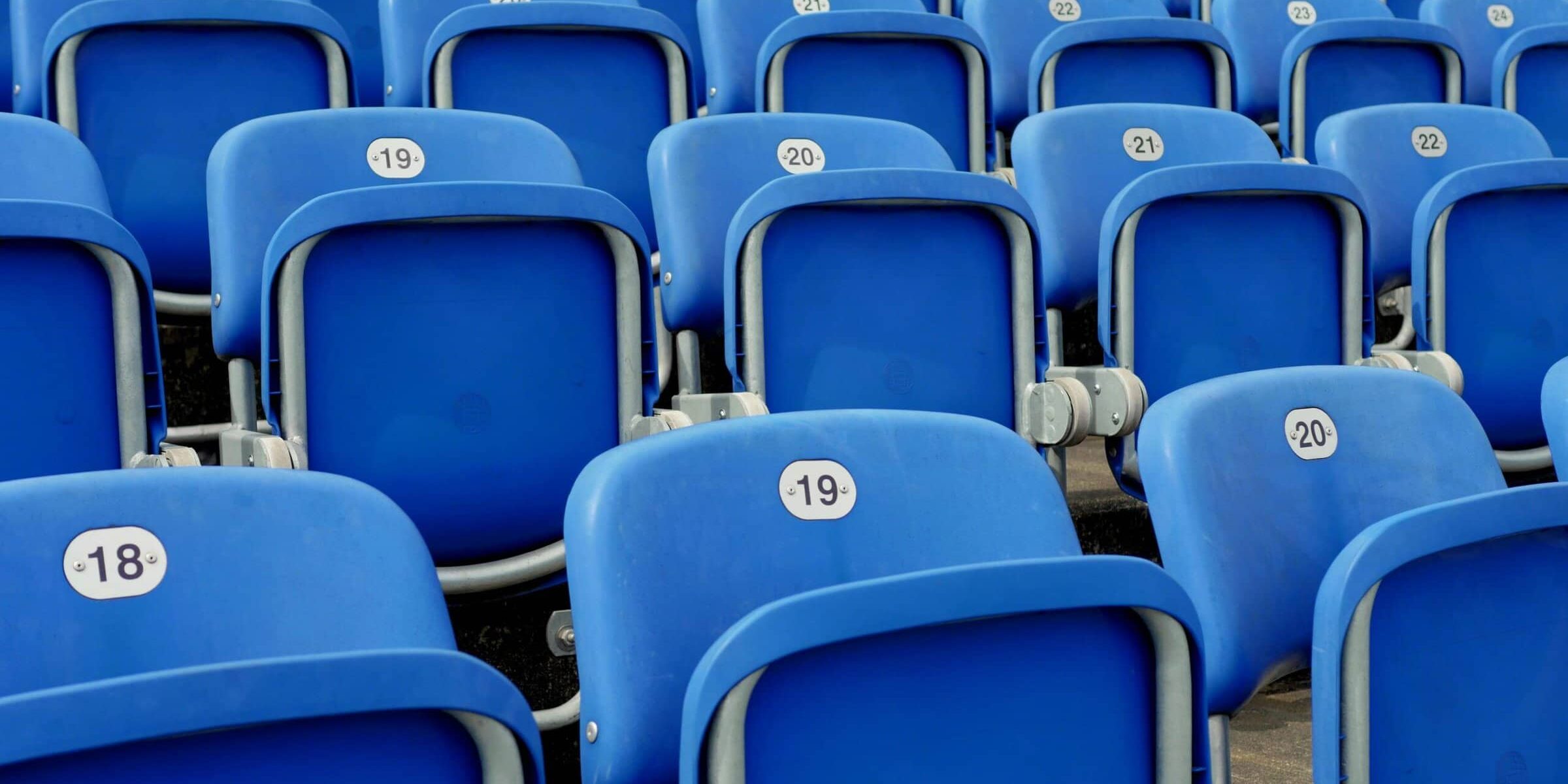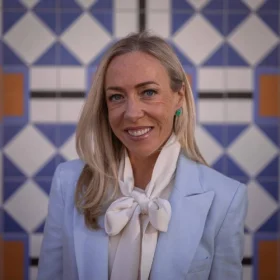January 23, 2025
Challenges Of Insuring An NIL Collective

Following the NCAA’s Oct. 7 settlement in In re: College Athlete NIL Litigation, the name, image and likeness revolution for amateur athletes is firmly here, bringing with it endless underwriting and claim scenarios.
NIL collectives, which emerged following the U.S. Supreme Court’s 2020 NCAA v. Alston decision, are founded by secondary school or university alumni and influential supporters to pool funds from donors to create NIL opportunities for student-athletes. They operate independently of the secondary school or university.
NIL collectives often present as nonprofits, even as collective funds available are often used as a recruitment tool for top athletic talent. The unique purpose and structure of NIL collectives create underwriting challenges for management liability carriers looking to capitalize on burgeoning collective growth.
This article examines the emergence of NIL collectives, the current litigation landscape that has created a favorable environment for collectives, and considerations for director and officer insurers looking to underwrite NIL collectives.
Currently, there is no regulatory framework governing how NIL collectives manage relationships with student-athletes or donor investors. No standard of care has been established for the handling of NIL collective funds, disbursements to student-athletes or services required by student-athletes.
Even so, NIL collectives often are structured as 501(c)(3) nonprofits[1] that are affiliated with a particular school and its athletic department. As with any nonprofit, there needs to be executive officers hired and a board of directors appointed.
Unique to the NIL collective nonprofit is its charitable purpose to pool funds from donors, fans, businesses and other sources to compensate student-athletes in exchange for the student-athlete’s completion of services.[2] Thus, management liability coverage to protect an NIL collective and its governing body is appropriate.
Traditionally, the director and officer coverage part of nonprofit management liability policies is meant to cover the nonprofit, its directors, officers, employees and volunteers for so-called wrongful acts in governing and managing the organization. On top of its loss history, insurers often consider the stated mission of the nonprofit, its profile of charitable giving, and the marketplace experience of its executives and board of directors.
But can an NIL collective’s management liability coverage be underwritten like a traditional nonprofit? Understanding the current litigation landscape created by former athletes against the NCAA and the explosion of NIL collectives may provide insight into why insurance product creativity in this space is tantamount.
Amateur NIL collectives were created in the wake of the Supreme Court’s unanimous Alston decision.[3] The court determined that the NCAA could no longer restrict member institutions from offering education-related compensation and benefits to student-athletes.
Such compensation and benefits include cash awards for academic achievement, graduate degree and vocational school scholarships, and computers.[4]
In addition, multiple state legislative initiatives emerged permitting student-athletes to benefit off their NIL.[5] In conjunction, the NCAA adopted an interim policy regarding student-athletes’ ability to benefit off their NIL in a manner consistent with the laws of the state where their school is located. Student-athletes are allowed to use a professional service provider, such as an agent or an attorney, for NIL activities. They are required to report NIL activities to their school.[6]
While Alston, state legislation and the NCAA allow students to profit off of their NIL, there is no task force to police how NIL collectives are operating as nonprofit collegiate sports
powerhouses.
Despite its efforts, the NCAA is facing an uphill battle as it tries to gain control over the explosion of NIL collectives.[7]
On Oct. 7, the NCAA’s settlement proposal in In re: College Athlete NIL Litigation was approved by the presiding judge in the U.S. District Court for the Northern District of California.[8]
The NCAA agreed to $2.8 billion of back pay damages offered to athletes who couldn’t benefit from NIL before 2021. The settlement also states that the NCAA must continue to allow third-party NIL benefits over and above existing scholarships and other benefits permitted by the NCAA.[9] The court’s preliminary approval came after previous attempts at settlement with more NCAA oversight of NIL disbursements had been rejected.[10]
Even with the preliminary settlement, which formally allows for NIL collectives to keep operating and paying amateur athletes, pending lawsuits against the NCAA for antitrust violations remain.
On Sept. 10, four former University of Michigan football players sued the NCAA and the Big Ten Network for unreasonable restraint of trade under the Sherman Act.[11] The former athletes seek monetary damages against the NCAA and the Big Ten Network for their loss of market value and suppressed earnings due to the former athletes’ inability to utilize NIL while they played for Michigan.[12]
After the Alston decision and in anticipation of the settlement approval in the College Athlete NIL Litigation, the number of NIL collectives participating in amateur sports programs continues to rise. Thirty-two states have articulated their own NIL regulations, while 18 have no legislative guidance. Those without codified NIL statutes defer to the NCAA interim rules, which are likely to change considering the proposed College Athlete NIL Litigation resolution.
Unsurprisingly, California’s Fair Pay to Play Act was the first state NIL law, and most following states have mirrored its language.[13]
Under California’s Fair Pay to Play Act, enacted in 2019, student-athletes at colleges, universities and high schools can earn compensation for the commercial use of their valuable NIL assets. The act restricts students from endorsing or sponsoring products that conflict with existing team contracts (like Nike or Adidas), mandates athletes being recruited disclose NIL endorsement deals and proscribes that athlete compensation cannot be conditioned on athletic performance.
To circle back to the question of whether an NIL collective management liability policy can follow nonprofit underwriting guidelines, there needs to be consideration given to the likelihood of typical management liability claims. Typically, nonprofit director and officer liability covers allegations of breach of duty and any other “wrongful act” that causes harm to the organization or its members. Regulatory coverage is often included as an endorsement to the policy as a protection to the organization and individuals employed or serving on the board for purported statutory violations.
Notably, regulatory exposure to a management liability from violation of California’s law or the NIL laws in over 30 other states seems to be far greater for the student-athletes and their representation.
Because NIL collectives cannot base compensation to an athlete on their performance, stating as much in a contractual provision would eliminate any confusion that the collective was running afoul of such a regulation.
In addition, in May, the Federal Trade Commission issued rules and regulations for advertising products and services requiring student-athletes promoting products on social media to make it obvious when they have a material connection with a brand when making certain kinds of posts.[14] Similarly, a contract provision warning that student-athletes are solely responsible for compliance with FTC regulations may shift liability from an NIL collective.
In addition, because most NIL collectives organize as 501(c)(3)s, the barrier to entry to become a collective is to be “organized and operated” exclusively for “exempt purposes,” such as religious, charitable, scientific, literary or educational purposes.[15]
The failure of an executive to manage the NIL collective funds and athletes in such a way to maintain a nonprofit status may create a liability to the IRS and donors that rely on a tax write-off for contributions to the collective. Such a management liability claim would need to be brought by a donor who may be making their own tax filings relevant in bringing such an action.
In addition, because an NIL collective is a nonprofit, not a limited liability company or investment firm, the owed fiduciary duty is solely to collect and distribute funds to athletes acting for a charitable purpose. As stated above, in most states there can be no condition of performance by an athlete or team as part of a deal, and the NIL collective is not meant to turn a profit for its investors. An NIL collective board should have finance and governance committees with oversight of the collective’s stated charitable mission being carried out.
If an audit of an NIL collective finds differently, the NIL collective’s management liability cover may be implicated. Notably, a cause of action for breach of duty for failing to carry out a stated charitable purpose would likely be brought by a donor losing tax-exempt status. This, again, may make the donor’s tax returns relevant. It is even less likely that an athlete profiting from NIL collective donations is going to be a whistleblower.
Another common cause of action against charitable organizations is financial fraud. A demand for books and records can be made or a lawsuit stating as much can be brought by NIL collective donors. However, overcoming the burden of proof demonstrating that NIL collective expenses and distributions were not in support of student-athletes may be challenging without the cooperation of student-athletes or agents benefiting from collective donations.
The ongoing drama between the University of Nevada, Las Vegas, and college quarterback Matthew Sluka may prove to be an example showing how this exposure plays out.
According to Sluka, a UNLV assistant coach verbally promised Sluka a $100,000 NIL payment for transferring from College of the Holy Cross. UNLV and the third party allegedly responsible for paying Sluka deny that any money — beyond $3,000 for an appearance this summer — was ever promised to Sluka. UNLV’s NIL collective denied having a deal in place with Sluka that required them to pay the starting quarterback, and on Sept. 26, Sluka left the team. UNLV has gone from 3-0 to 4-1 without him and is refusing to accept a Las Vegas Sportsbook offer to cover the $100,000 alleged offer.[16]
Because the Friends of UNLV collective is denying any such promises were made, and the agreement was allegedly verbally offered by a UNLV employee, a breach of contract case against the NIL would be tough to pursue. However, there is always the potential that vicarious liability could arise if there is proof of communication between the collective and UNLV about requirements. When, and if, Sluka pursues legal action against UNLV or the collective, the complaint may allege unfulfilled promises, thwarting other business opportunities or improper inducement.
Given that UNLV and the NIL collective have stood their ground, the potential for exposure to the Friends of UNLV NIL Collective seems limited. If UNLV’s football team loses without Sluka, however, the Friends of UNLV may not remain so friendly to its directors or officers. While this may result in the ouster of certain executives or board members, an impact to the collective’s management liability policy seems unlikely.
With the dynamic landscape of what, if any, rules govern NIL collectives, whether a collective is a good risk remains under review.
References
[1] The IRS chief counsel concluded many NILs do not qualify for 501(c)(3)
status. https://www.alston.com/en/insights/publications/2023/10/the-irss-latest-play-onnilcollectives#:~:text=Their%20exempt%20purpose%2C%20as%20required,the%20collectiv
es%20would%20be%20taxable.
[2] https://www.mmwr.com/when-one-ncaa-door-closes-another-nil-door-opens-what-precollegiate-enrollment-nil-deals-mean-for-schools-nil-collectives/.
[3] https://www.supremecourt.gov/opinions/20pdf/20-512_gfbh.pdf.
[4] Id.
[5] https://cbjlawyers.com/ncaa-student-athletes-compensation/.
[6] Id.
[7] GRANT HOUSE, et al., Plaintiffs, v. NATIONAL COLLEGIATE ATHLETIC ASSOCIATION, et
al., Defendants Case Nos. 4:20-cv-03919 CW, 4:20-cv-04527 CW (June 2021), Hubbard
v. National Collegiate Athletic Association, 4:23-cv-01593, (N.D. Cal.), Carter v. Nat’l
Collegiate Athletic Ass’n, 23-cv-06325-RS, (N.D. Cal. Apr. 29, 2024).
[8] Id.
[9] Id.
[10] Id.
[11] https://www.pacermonitor.com/public/case/55034636/Robinson_et_al_v_National_Coll
egiate_Athletic_Association_et_al.
[12] Id.
[13] https://www.saul.com/nil-legislation-tracker.
[14] https://www.fisherphillips.com/en/news-insights/starting-qb-leaves-undefeated-teamover-nil-dispute-5-things-universities-and-collectives-should-do-to-reduce-disputes-andlegal-risk.html.
[15] https://www.irs.gov/charities-non-profits/charitable-organizations.
[16] https://www.si.com/college-football/circa-ceo-offers-to-pay-alleged-nil-deal-to-unlvqb-matt-sluka.
This piece was originally released on Law360.
Meet the Author
 Sarah Abrams, Head of Claims
Sarah Abrams, Head of Claims
Baleen Specialty, a division of Bowhead Specialty
Sarah Abrams is the Head of Claims at Baleen Specialty, a division of Bowhead Specialty. She built the Baleen Claims department and in her previously role as Head of Professional Liability Claims at Bowhead Specialty she oversaw the professional liability claims department handling of Director and Officer, Management Liability and Errors and Omissions claims. Sarah practiced law in Chicago, representing carriers, before moving in house. She has authored numerous articles and is a regular speaker at insurance and legal industry events.
News Type
PLUS Blog
Business Line
Directors and Officers (D&O)
Topic
Professional Liability (PL) Insurance
Contribute to
PLUS Blog
Contribute your thoughts to the PLUS Membership consisting of 45,000+ Professional Liability Practitioners.
Related Podcasts

UK Shareholder Class Actions: An Emerging Threat for D&O Insurers?
In this episode of the PLUS Podcast, we dive into the complexities…
Related Articles

Closing Keynote Spotlight: Forecasting the Future with Andrew Busch
The 2025 PLUS Conference concluded on a high note with a powerful…

Emerging Risks in Private Equity Webinar Recap
The recent “Emerging Risks in Private Equity” webinar brought together leading experts…

The Rise of Defamation Claims in a Social Media Saturated World
Social media changed the mechanics of reputation harm. A false allegation posted…
